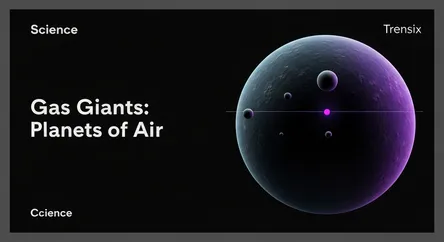Science
Gas Giants: Planets of Air

Discover the massive planets known as gas giants. Learn about Jupiter, Saturn, and what makes these celestial bodies unique in our solar system.
What is it?
A gas giant is a large planet composed primarily of hydrogen, helium, and other gases. Unlike rocky planets like Earth, they lack a well-defined solid surface, though they likely have a dense core. The most famous examples in our solar system are Jupiter and Saturn. These colossal worlds are known for their deep, turbulent atmospheres, powerful storms like Jupiter's Great Red Spot, and extensive ring systems. Uranus and Neptune are often called "ice giants," a subclass with more water, ammonia, and methane ices in their composition.
Why is it trending?
Gas giants are trending due to new discoveries from advanced observatories like the James Webb Space Telescope (JWST). JWST is providing stunningly detailed data on their atmospheres, weather, and moons. Scientists are also discovering thousands of exoplanets—planets outside our solar system—many of which are gas giants orbiting other stars. This research helps us understand how planetary systems form and evolve, keeping these massive worlds in the astronomical spotlight.
How does it affect people?
Gas giants play a crucial role in their solar systems. Jupiter's immense gravity acts as a "cosmic bouncer," deflecting asteroids that could threaten Earth. Studying their extreme weather helps scientists model atmospheric physics, improving our understanding of climate dynamics. Ultimately, exploring these distant worlds inspires curiosity, drives technological innovation in telescopes and spacecraft, and deepens our understanding of the universe and our place within it.